Which are more diverse: Mexico’s rural areas, or its cities? At first glance, Mexico’s rural areas are all quite similar in that they lack the characteristics of Mexico’s large cities such as tall buildings, traffic congestion, modern shopping malls, bustling streets, heavy industry and the like. While rural areas are all similar in that they […]
Drug gangs diversify their business activities

Wise investors know that diversification is a sound way to protect their resources, and Mexico’s drug cartels have apparently been well educated in this regard. Recent news reports have highlighted two new ways in which Mexico’s drug cartels preserve and grow their wealth: the marketing of pirated merchandise, and the theft and sale of natural […]
Mexico imposes seasonal ban on all shark fishing

According to government statistics, about 21,000 metric tons of shark are landed in the nation’s ports each year. However, many studies have suggested that shark populations are in decline due to overfishing. A series of conservation strategies are being guided by on-going research into shark populations undertaken by scientists attached to the National Fisheries Institute […]

Over the past year, the US State Department has issued repeated warnings about travel in Mexico. Some of these warnings are specific to certain stretches of highway; others are broader and focus on cities or regions. Travel Weekly has produced a handy map showing the areas currently affected by advisories (a version of this map […]
Are Mexico’s large cities growing faster than small cities?
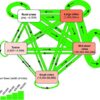
Aside from intra-urban moves (ie. those made within a city or town), the major focus of migration in Mexico has shifted from the largest cities to the medium cities (those with a population under one million). Medium cities, such as Mérida, San Luis Potosí, Querétaro and Hermosillo, attracted over 1.6 million new migrants compared to […]
Mexico’s role in the birth control revolution
The oral contraceptive pill, often referred to simply as “the Pill” will be officially sixty years old on October 15, 2011. In the words of The Economist: it “was arguably the first lifestyle drug to control a normal bodily function—fertility—rather than a dread disorder. It transformed the lives of millions and helped reshape the role […]
Key geographic indicators from Mexico’s 2010 Census
This post summarizes some important characteristics of Mexico’s population and households, as revealed by the definitive results of the 2010 population census. Literacy 5.3 million Mexicans over the age of 15 are unable to read and write a simple message (i.e. they are functionally illiterate). The highest rates of illiteracy are in Chiapas (17.0%), Guerrero […]
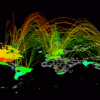
ITESM, a university based in Monterrey, established Mexico’s first internet connection in 1989. Other universities soon followed. In the late 1990s Telmex started to provide internet service to businesses and the general public. Other providers entered the market but by 2005 Telmex still had about 80% of the market. Public access via internet cafes is […]
How ecological is ecotourism in Mexico?

Ecotourism is often touted as one solution to many of the potential woes associated with conventional resort tourism. It should come as no surprise to find that Mexico has embraced ecotourism: Mexico’s biodiversity is phenomenal. It is one of the five most important countries in the world in terms of biodiversity: Mexico’s mega-biodiversity The diversity […]
Wildlife trafficking in Mexico: how many wild parrots are illegally captured each year?

In this post we return to The thorny issues of plant and animal trafficking and biopiracy in Mexico. We highlight several recent news items related to wildlife trafficking, as well as an important survey of the illegal parrot trade in Mexico. Mexican police launched dozens of raids on stores and markets in March 2010, looking […]
Why Las Tuxtlas Biosphere Reserve is well worth a visit
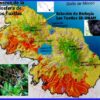
In a recent post, we looked at an Enchanted Lake in southern Mexico, in the Sierra de las Tuxtlas, near Catemaco in the Gulf Coast state of Veracruz. In this post we take a look at the surrounding Las Tuxtlas Biosphere Reserve. Scenically, the entire Tuxtlas region is one of the most fabulously beautiful in […]
How did Mexico get to be the world’s 11th most populous country?
Mexico is currently the world’s 11th most populous country. While it has not always held this position, Mexico has been among the world’s population leaders for the last two thousand years. Worldmapper.org provides data on the estimated population occupying the areas of current countries for various years starting in the year one, when India (62 […]
‘War is God’s way of teaching Americans geography.” This quote is commonly attributed to Ambrose Bierce, the American journalist and satirist, who fell off the map in Revolutionary Mexico in 1913, never to be seen again. However, as pointed out by an alert reader (see comments), the quote has never been established as originating with […]

Peculiar, but true. There are several lakes named Laguna Encantada (Enchanted Lake) in Mexico, but this one is near Catemaco in the Tuxtlas region of the state of Veracruz. Catemaco is famous for its witches, so perhaps one of them cast a spell on the lake, making it behave perversely, its level changing in opposition […]
How were the Piedras Encimadas (Stacked Rocks) in Puebla, Mexico, formed?

The Valle de las Piedras Encimadas (Valley of the Stacked Rocks) is 150 km from the city of Puebla in the northern part of the eponymous state. The Piedras Encimadas are rock outcrops occupying an area of about 4 square km (990 acres) centered on a small valley at an altitude of 2400 meters above […]
Mexico’s aerospace sector attracted $1.25 billion in investments in 2010, 25% more than in 2009. The city of Querétaro has become the hub of Mexico’s fledgling aerospace sector, with several companies choosing it as an ideal manufacturing location. Opening a new section of the Bombardier plant in the city of Quéretaro, President Felipe Calderón highlighted […]
Are Mexicans the world’s hardest-working people or the least productive?

The headline — “Mexicans work longer hours than anyone else” — said it all, or did it? A recent report from the OECD (Organisation for Economic Co-operation and Development) found that Mexicans worked longer hours than people in any other OECD country, devoting 10 hours a day to paid and unpaid work (the latter includes […]
Review of Jeffrey M. Pilcher’s “¡Que vivan los tamales! Food and the making of Mexican Identity”

Are you interested in the geography of Mexico’s regional cuisines or the historical relationships between food preparation methods and gender roles in Mexican society? If so, add ¡Que vivan los tamales! Food and the making of Mexican Identity by Jeffrey Pilcher to your “Books Wanted” list. Pilcher’s lively and entertaining account analyzes how the history […]
Marriage declining among Mexican couples
Mexican couples still prefer marriage over the alternatives, but not as strongly as in the past. According to the 2010 census, 40.5% Mexicans age 12 and over were married, down from 44.5% in 2000 and 45.8% in 2009. The 11% decline since 1990 does not sound like much, but is significant when the data are […]
Children of Mexico’s indigenous groups are disadvantaged from birth
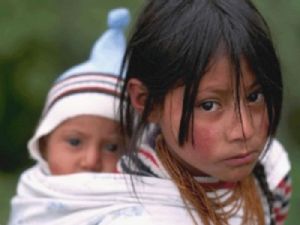
About 12% of Mexico’s population belongs to one or other of the numerous indigenous groups in the country. According to Mexico’s National Human Rights Commission (NHRC), Indian children under 5 years old are the group with the most needs in Mexico. They have a mortality rate that is 60% higher than that of non-Indian children. […]
Religious diversity is increasing in Mexico
Mexico is still considered to be a Catholic country, but it is slowly becoming less Catholic. In the 2010 census 82.7% said they were Catholics compared to 88.0% in 2000 and 89.7% in 1990. In a recent report, Sociologist Roberto Blancarte, who specializes in research into religions, claims that for each day of the last […]
Two examples of trans-border air pollution on the Mexico-USA border
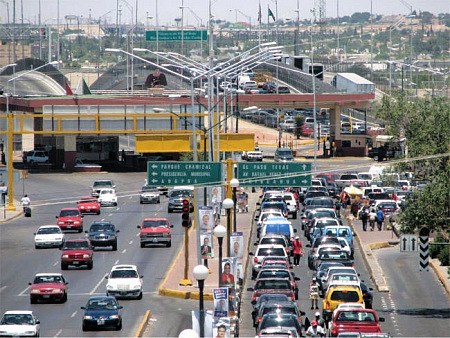
Poor air quality is known to have significant economic and social impacts, including adverse health risks and a lower quality of life. In this post, we examine two examples of trans-border air pollution. We analyze the causes of poor air quality, and describe the strategies being adopted on either side of the Mexico-USA border to […]
Make your own “Better Life Index”
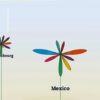
An interactive graph from the OECD (Organisation for Economic Co-operation and Development) now allows you to compile your own “Better Life Index” and compare “well-being” across the 34 member countries of the OECD. From an educational perspective, the graph offers hours of fun and fact-filled learning opportunities. OECD Interactive graph for Better Life Index The […]
Relying on geography for orientation: some indigenous languages do not have words for “left” or “right”
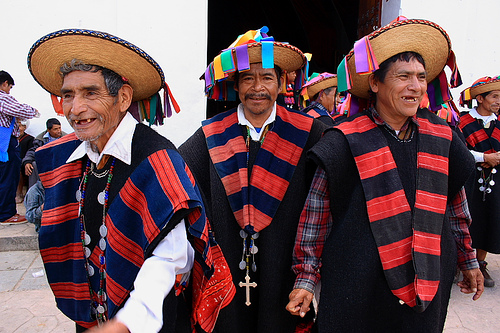
Mexico’s indigenous groups have long been a rich resource for investigations of all manner of research concerning culture, linguistics and sociology. In this post, we consider Spatial Reasoning Skills in Tenejapan Mayans, a study relating to geographic reasoning, which relied on the participation of indigenous Tseltal-speaking Maya in Tenejapa (Chiapas), southern Mexico. According to the […]
Mexico’s population is aging fast
Mexico’s population has aged significantly in the past two decades. In 2010, the median age was 26 years meaning that there were equal numbers of people above and below age 26. The median age in 2000 was 22 years while that in 1990 was only 19 years. Obviously, the number of older adults is growing […]
A round-up of news items about Mexicans in the USA
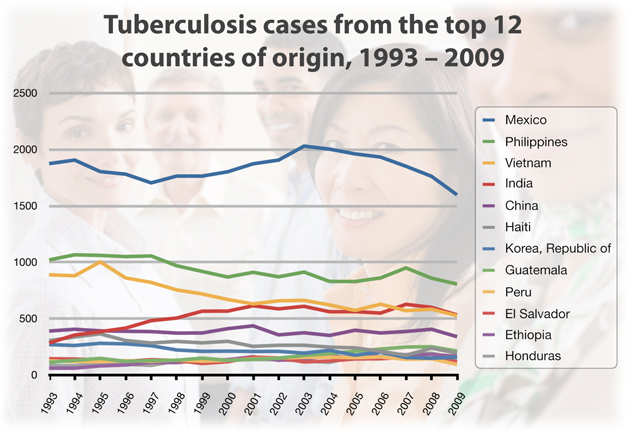
This is the first in an occasional series of updates featuring news items relating to the Mexican diaspora, especially that part of it residing in the USA. 1. Mexico is the leading point-of-origin for foreign-born residents of the USA diagnosed with tuberculosis The number of TB cases reported in foreign-born persons in the USA was […]
Mexico’s Magic Towns program to continue at least until 2012
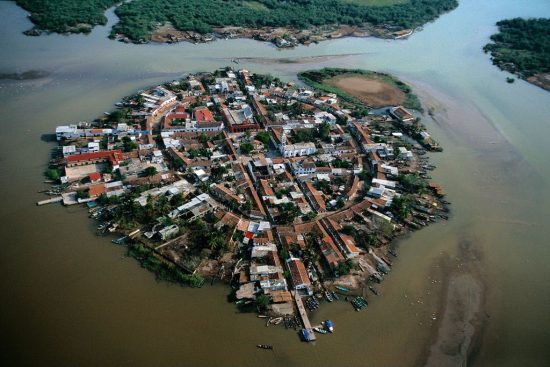
We had earlier reported that the federal Tourism Secretariat (Sectur) was about to announce the end of the Magic Towns program. Tourism has since announced that the program will continue at least into next year. [Thanks to reader Jess for her report that the Tourism Secretariat has since announced that the program is being continued, […]
Mexico’s Magic Towns now include Zacatlán in the Sierra Norte of Puebla
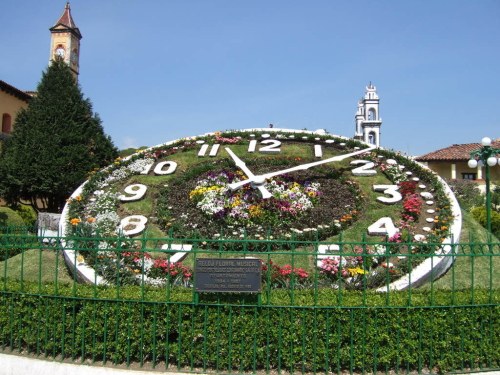
One of the Mexican Tourism Secretariat’s flagship programs is its “Magic Town” designation. This is a program that was long overdue when it finally began in 2001. Mexico’s Magic Towns (Pueblos Mágicos) range from tiny, almost undiscovered villages on the coast to sizable inland cities. What they all have in common is that they have […]
Projecting Mexico’s population: when, if ever, will it stop growing?
Between 2000 and 2010, Mexico’s population grew over 15% from 97.362 million to 112.337 million. While this is less than the 20% growth experienced between 1990 and 2000, it is still relatively fast. Will Mexico’s population ever stop growing? To answer such questions, demographers make population projections based on rates of births, deaths and net […]
More impacts of Mexico’s war against drug cartels
Drug trafficking is one of the North America’s major contemporary issues, with widespread ramifications not only for Mexico, but extending well beyond her national borders. This is the first of an occasional series of updates examining some of the numerous different effects of the war on drug-related violence on Mexican society, the environment and the […]